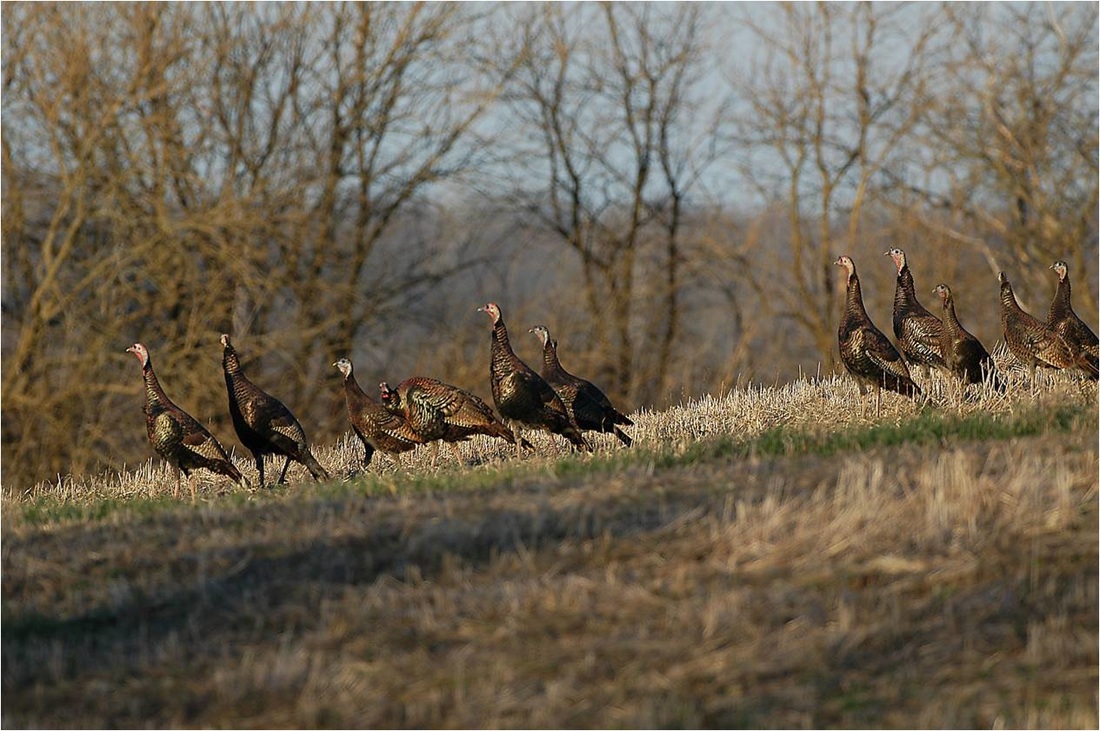|
Thanksgiving is all about family, friends, and TURKEY! If you are looking for some kid-friendly fun this week, try constructing your own wild turkey call. Before we get into the activity, did you know we have wild turkeys in Ohio? The wild turkey is Ohio’s largest upland game bird, standing three to four feet tall and weighing up to 24 pounds. It has a slim build, long neck, and nearly featherless head. The body feathers appear drab brown at a distance, but are actually iridescent when the bird appears in good light; this iridescence gives the bird its true coloration--bronze with hints of red, green, copper, and gold. Wild turkeys are very adaptable animals. Although they prefer mature forests, with substantial cover and suitable food sources, they can live successfully in areas with as little as 15 percent forest cover. The feeding area should include a mix of forbs, grasses, and insects. Wild turkeys make a variety of sounds, including a male’s gobble, the hen’s yelp, a poult’s peep, an alarm call that sounds like putt, and an assortment of purrs, trills, croaks, whines, and barks. The best known of these vocalizations is the gobble. (Ohio DNR Division of Wildlife). What do these turkey calls mean? (National Wild Turkey Federation)
Who knew turkeys had so much to say? Are you ready to make your own call? Project BEAK has a great activity that can be done in the classroom or at home. Here's how to make a turkey call: Materials needed: Clear plastic cup and two 12 inch long pieces of strong thread (not string or yarn).
See the full instructions from Project BEAK below:
0 Comments
Leave a Reply. |
Details
Author:
|
||||||
|
|
Contact:PHONE: (513) 695 - 1337
EMAIL: wcswcd@gmail.com HOURS: Monday - Friday 7:30am - 4:00pm (except holidays) Connect:Warren County Soil & Water Conservation District Copyright © 2016
Warren SWCD Privacy Notice. Emails are serviced by Constant Contact. Constant Contact's Privacy Notice. |

